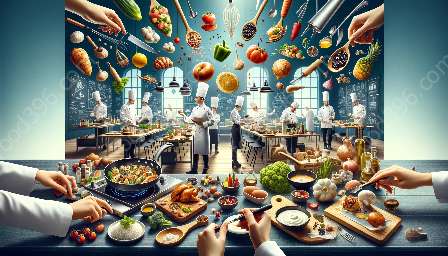Introduction
Food presentation and garnishing play a crucial role in the culinary world. Chefs and food enthusiasts are always seeking new ways to elevate the visual appeal of their dishes. One such innovative technique involves the use of edible powders and dusts for garnishing. This article will explore the artistic and practical aspects of incorporating edible powders and dusts into culinary creations, and how this technique relates to culinary training and food presentation.
Understanding Edible Powders and Dusts
Edible powders and dusts are made from various food ingredients, such as fruits, vegetables, herbs, spices, and even edible flowers. They are finely ground to a powdery consistency, making them easy to sprinkle or dust onto dishes. These powders and dusts come in an array of vibrant colors and possess unique flavors that can enhance the overall taste and aesthetic appeal of a dish.
They can be made in-house using a food dehydrator or can be purchased from specialty stores. Common edible powders and dusts include matcha powder, turmeric powder, beetroot powder, freeze-dried fruit powders, and cocoa powder. Each type of powder adds a distinct flavor profile and visual element to the dish.
Enhancing Food Presentation
The use of edible powders and dusts can greatly enhance food presentation. These colorful powders and dusts can be used to create intricate designs, vibrant patterns, and artistic accents on plates. They provide a creative way to add visual interest and depth to the presentation of a dish, making it more visually appealing and enticing to the diner.
For instance, a sprinkle of matcha powder can add a pop of green color to a dessert, while a dusting of beetroot powder can create a striking crimson hue on a savory dish. Chefs can use stencils or decorative templates to create intricate patterns using edible powders and dusts, showcasing their artistic flair and attention to detail.
Furthermore, edible powders and dusts can be used to add texture and dimension to a dish. For example, a dusting of cocoa powder on a creamy dessert can add a contrasting element of bitterness and a velvety finish. By strategically incorporating these powders and dusts, chefs can create visually stunning and multi-dimensional presentations that elevate the dining experience for guests.
Garnishing Techniques
When it comes to garnishing, edible powders and dusts offer a myriad of creative possibilities. They can be used to garnish and adorn desserts, beverages, main dishes, and even appetizers. Chefs can experiment with dusting, stenciling, sifting, and sprinkling techniques to achieve different effects and decorative styles.
Additionally, edible powders and dusts can be used in combination with other garnishing elements, such as fresh herbs, edible flowers, microgreens, and sauces, to create visually stunning and harmonious compositions. By mastering the art of garnishing with edible powders and dusts, chefs can add an element of surprise and sophistication to their culinary creations, leaving a lasting impression on diners.
Culinary Training and Innovation
Integrating the use of edible powders and dusts in culinary training programs can inspire aspiring chefs to think outside the traditional garnishing toolbox. By exposing students to the creative potential of edible powders and dusts, culinary educators can foster a culture of innovation and exploration in the kitchen.
Culinary students can learn about the various types of powders, their flavors, and the techniques for incorporating them into dishes. This hands-on experience can help students develop a keen eye for detail and aesthetics, as well as an appreciation for the transformative power of garnishing. As a result, they will be better equipped to create visually stunning and memorable culinary creations that delight the senses.
Conclusion
The use of edible powders and dusts for garnishing is a valuable technique that can elevate food presentation and garnishing to new heights. By embracing the creative potential of these powders and dusts, chefs and culinary professionals can captivate diners with visually stunning and innovative dishes. Whether it's through the use of vibrant colors, intricate patterns, or added textures, edible powders and dusts offer a myriad of possibilities for culinary expression. By incorporating this technique into culinary training, aspiring chefs can develop a deeper appreciation for the art of garnishing and enhance their ability to create unforgettable dining experiences.

